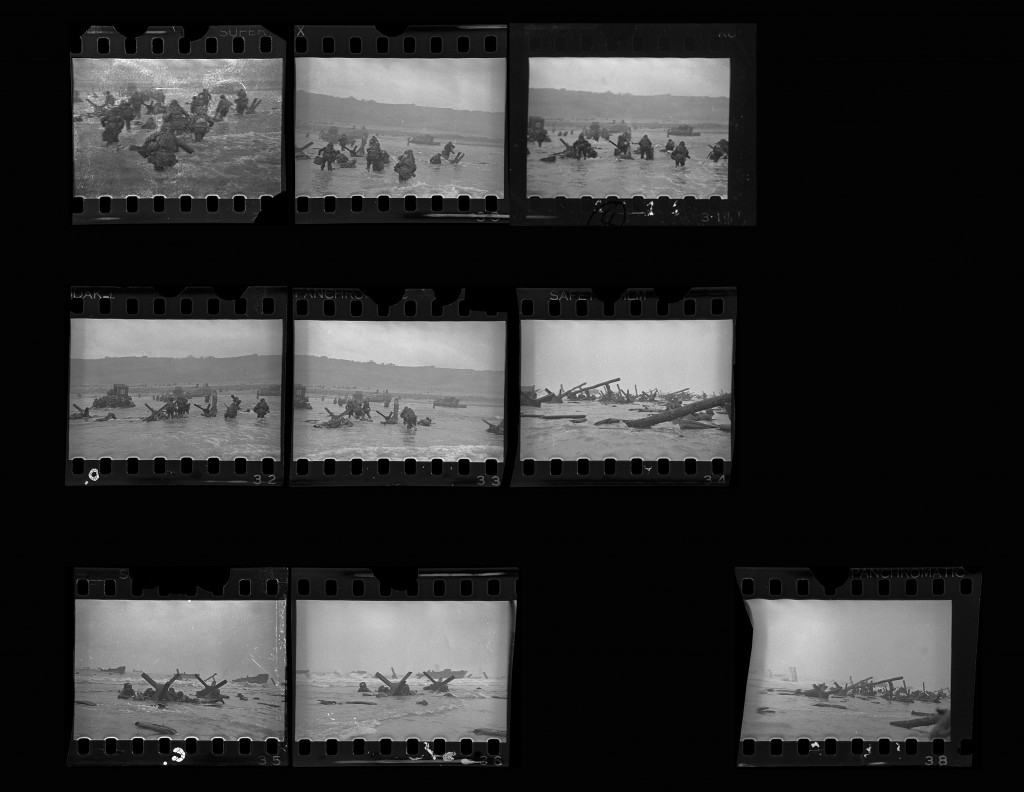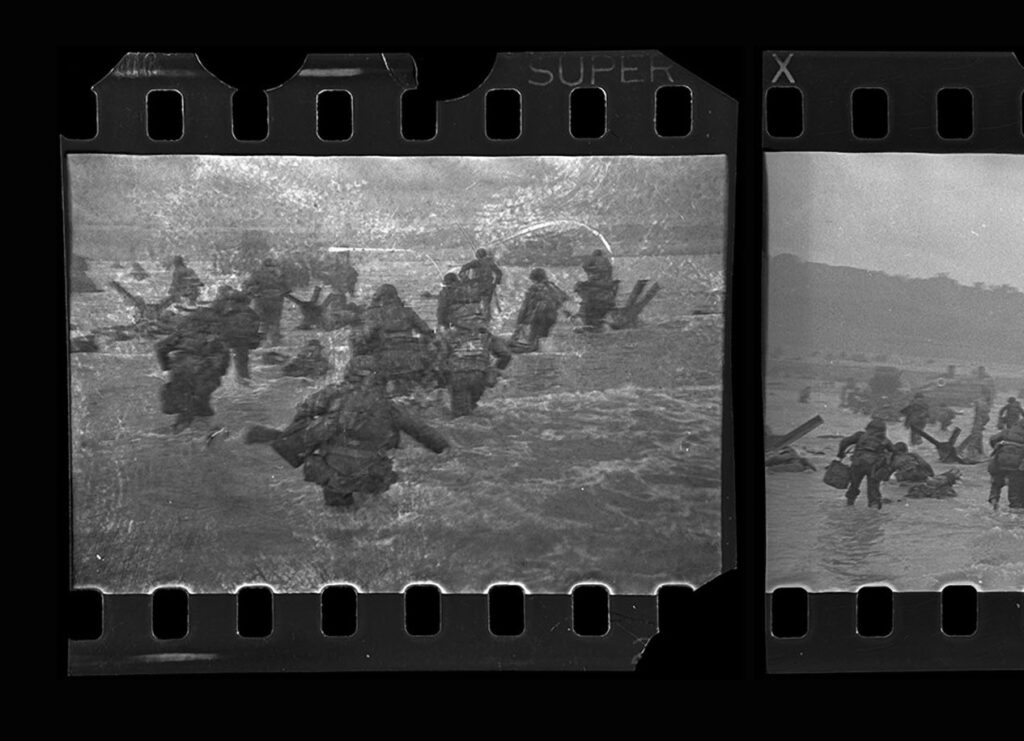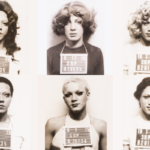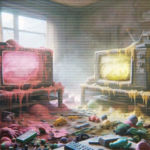A more fallible, more human Robert Capa: interview with A. D. Coleman
Publicado em: 18 de September de 2015An interview with the photography critic A. D. Coleman, who starting in June 2014 has published a series of articles questioning the the stories involving Robert Capa’s photographs taken during the D-Day, when Allied troops disembarked on Omaha Beach, Normandy, during World War II. This interview was conducted in September 2015.
***
Francisco Quinteiro Pires: You wrote that “Robert Capa’s missing and supposedly destroyed D-Day negatives – the ones he shipped to London from Weymouth on the morning of June 7, the ones purportedly ‘ruined’ in a darkroom accident that night – sit today, intact and available for study, where they’ve sat for years: hidden in plain sight in the Robert Capa and Cornell Capa Archive at the International Center of Photography in New York.” When I reached the curator Cynthia Young to confirm this information, she said that ICP holds only nine surviving negatives from the Omaha Beach landing on June 6, 1944. You said that you have low quality printouts of the ICP’s reconstructions of the intact negatives. Why did you not publish them at your blog in order to prove your theory?
A. D. Coleman: It is true that ICP holds only the nine surviving negatives of Capa’s ten exposures on Omaha Beach; that’s all he made while there for his brief stay. It is also true – as I disclosed in my posts about my visit to the ICP Capa Archive last year – that ICP holds portions of four distinctly separate additional rolls of pre-invasion 35mm images (made during the boarding of troops at Weymouth and en route to Normandy), plus caption notes describing a fifth 35mm roll that seems to have disappeared. ICP has never published or exhibited those rolls, nor announced their existence in the Capa Archive.
All those rolls were sent to London in one shipment when Capa landed back at Weymouth on the morning of June 7th, 1944; that is what Capa tells us in his memoir. All arrived there at 9 p.m. that evening (along with several rolls of 120 film, made with his Rolleiflex, containing pre- and post-invasion exposures); that is what John Morris told us for 70 years. My argument is that Capa did indeed ship all of his 35mm films of his complete D-Day coverage to Morris, but that most of those negatives contained pre-invasion images. This is the Occam’s razor explanation for the presence of those additional rolls of 35mm film in the ICP collection.
As to why I have not published the low-quality printouts of the scans of the ICP’s reconstructions of the of the contact sheets of those intact pre-invasion negatives: Cynthia Young gave them to me with the understanding that they were not for publication, but for reference only. I have simply honored that agreement. However, I have also taken great pains, in my posts, to provide the accession numbers and other detailed information necessary for any qualified scholar to retrieve those scans and the other materials I describe in the ICP Capa Archive, in order to verify my findings. (I should add that those reconstructions of the pre-invasion contact sheets were made at my suggestion; the idea somehow had never occurred to the world’s foremost Capa scholars at ICP.)
Here is the new story that Morris now proposes as an explanation of those rolls: He received them in a previously unmentioned earlier shipment sent ahead in some unexplained fashion by Life photographer David Scherman, to whom Capa had magically transferred them for unexplained reasons while they traveled across the English Channel to Normandy on separate vessels at night in blackout conditions and under radio silence. Capa never mentioned transferring his pre-invasion films to Scherman for an earlier shipment. Scherman never mentioned receiving them and making that shipment. And for 70 years Morris never mentioned that earlier shipment.
Over the course of 70 years and hundreds of tellings – dozens of them in print, on film, in videos, and in audio recordings – this pre-shipment had slipped Morris’s mind, he tells us now. Nonetheless, he now wants us to believe it happened; he received the earlier shipment, had them processed, and edited them on June 6, hours before Capa’s D-Day images arrived separately. This is not only logistically impossible, it contradicts every account Morris had given up till fall 2015 of the delivery of Capa’s films. Nor is there any logic to it; why would Capa go to all that trouble to transfer his pre-invasion exposures to another photographer who was not returning to England but going in with the Allied forces at the same time to cover the invasion? In short, it makes no sense whatsoever.
When I interviewed Cynthia Young about your posts, she repeated the story told by the editor John Morris about the melted emulsion and perpetuated by Richard Whelan. Although Morris acknowledged that your theory exists, he did not recant his version. Wouldn’t it be interesting for Morris to get rid of the responsibility of being the person who commanded the laboratory that ruined the D-Day images taken by Capa?
Actually, Morris has recanted large and central portions of his fiction of seventy years. In the interview conducted by Mark Edward Harris in summer 2014, published in B&W magazine in fall 2014; in his email q&a with me, published at my blog last fall; in his November 2014 CNN interview with Christiane Amanpour; and in the document he circulated in January 2015 titled “The A. D. Coleman Attack,” he confirmed that (a) he never actually saw any negatives with any traces of melted emulsion; (b) it’s quite possible that Capa made only the ten exposures that we have; (c) Capa may in fact have stayed on Easy Red for half and hour or less; and (d) if so, he is in fact relieved to learn that he is not responsible (in his supervisory role) for the loss of any Capa negatives.
However, the “new theory” Morris proposes to explain his continuing claim to have seen three and two-thirds roll of 35mm film that he had previously described as “pea soup,” “gray mud,” etc. – that Capa sent him a second, later shipment (which until recently he always described as the only shipment he received) and for some unexplained reason threw three rolls of unexposed film in with the lone partially exposed roll, which unexposed rolls when developed of course came out blank – is simply risible. Professional photographers don’t confuse or jumble exposed rolls with unexposed rolls, partly because they look different: unexposed rolls have a strip of film leader visible outside the cassette, whereas exposed rolls have that leader wound inside, invisible. And unexposed film, as any photographer will confirm, develops clear, transparent – not a condition describable as “pea soup,” “gray soup,” “gray mud,” etc., which is how Morris has described them in all accounts prior to our investigation.
This is desperation talking, and it strikes me as pathetic.
According to your theory, Capa stayed on the battleground for less than 30 minutes and only used one film to take pictures of the D-Day landing at Omaha Beach. Charles Herrick wrote that Capa arrived at Omaha Beach two hours after the landing of the first troops. Does this make Capa a coward and his images less important?
The images he made are what they are. Our investigation does not challenge their authenticity, nor affect their significance as historical documents. To the contrary, I think we have enhanced their historical value by establishing numerous previously unknown facts about them, such as these: (a) they are the only negatives Capa made on Omaha Beach that day; (b) they underwent no post-exposure damage during processing, so they represent exactly what Capa registered on his film; (c) the cassettes of 35mm Kodak film that Capa used were slightly too small for Capa’s Contax II, resulting in consistent overlap of the exposures onto the lower sprocket holes of the film – not the result of any one-time darkroom catastrophe, as claimed by Whelan and Young; (d) Capa came in with the second wave, so they show scenes of second-wave action, not first-wave moments; (e) the figures in the middle ground of several of his images are in fact not scared troops hiding from enemy fire, per Life’s original caption, but engineers demolishing obstacles to allow landing craft to get through – in fact, the most successful demolition team to do so that day, Unit 10; and (f) the pictures themselves enable us to determine exactly where on Easy Red the images were made, and, within a one-hour stretch, when. We expect that future scholars will appreciate and benefit from this new information.
Capa arrived with the contingent to which military records show a press photographer had been assigned – the rear echelon of that regiment’s headquarters command, in the second wave. He got scared and left quickly. “Does this make Capa a coward?” I think that’s the wrong question to ask. Certainly it’s not the point of our investigation, which primarily concerns the cultural myth that sprang from Capa’s time on Omaha Beach and the cover story for the small number of images he made there, created by John Morris in the early hours of June 8 in London, authenticated by Capa in his fictionalized memoir, and subsequently disseminated energetically by what I call the “Capa Consortium.”
Capa had a panic attack on Easy Red. He acknowledges that in Slightly Out of Focus, in which he also states that he spent the entire trip back to Weymouth berating himself for his cowardice – his word for it. Does an hour of cowardice – even a crucial hour – define a person for life? Should it, in his own mind, or in ours? Capa certainly showed courage in many situations before and after D-Day. He showed courage on D-Day just by showing up – even if, with a reputation as “the greatest war-photographer in the world,” he couldn’t afford to sit on the sidelines during that battle and felt he had to go, however reluctantly.
This may sound strange, but our findings have not diminished my respect for Capa overall, and I don’t think they should have that effect on others. If it makes him less mythic, less heroic, it also makes him more fallible, more human. As a result, he has become a more nuanced, complex character in my vision of him. And the story of the making of his D-Day images, the subsequent fate of his negatives, and the construction of the myth that evolved around those, has certainly become a richer one, revealing much about the workings of the photojournalism industry.

Digital reconstruction of contact sheet. © Robert Capa/International Center of Photography/Magnum Photos/Latinstock
Some journalists in France reported about your findings, but the American press remained silent. In 2009 The New York Times published a piece on new doubts raised over Falling Soldier, the famous picture taken by Capa during the Spanish Civil War. Is there an explanation for the American press silence about a new theory that can change the way people think of Capa, the prototype of the war photographer?
I have no explanation for the lack of interest in our project shown by the U.S. press (not to mention the press from many other countries). By the same token, I am absolutely amazed by the way our project went viral this summer in France and other Francophone countries (Belgium, Switzerland) after Patrick Peccatte wrote about it in his highly specialized blog about photographs of Normandy made just before, during, and after World War II. Le Monde, Libération, l’Obs, Le Figaro – who could predict this? Peccatte tells me he is as surprised as I am. Neither of us has any explanation, but it’s fascinating to watch.
I should qualify that by noting that Peccatte followed our research as it evolved, came to it already knowledgeable about D-Day due to his own researches, read it all while approaching it with a skeptic’s mindset, gradually became persuaded – by the evidence – that we were at least partly right, and then produced as thoughtful and accurate a synopsis as I could have hoped for, along with a heartfelt account of his own initial resistance to our arguments and gradual conversion.
Though we don’t intend it as such, what we have online now is daunting – close to 50 posts or chapters. I have no doubt that Peccatte’s patience with our work and his excellent summary of it in French, by a native French speaker, made the core issues immediately available to Francophone readers, in ways that I could not have done. That was a gift, for which I thank Peccatte. I only wish we could find such interpreters in other languages.
A number of journalists and others have commented on the “aggressive” tone of your posts on this subject. How would you answer them?
In response to concern about the voice and tone of our investigation, let me point out that 70 years of respect and politesse from critics, historians, and cultural journalists toward Morris, Cornell Capa, Whelan, Young, and others resulted in the further entrenching of the Capa D-Day myth. It only enhanced the credibility of the myth itself and of those who promulgated it for their own benefit and that of their institutions. Yasmine Youssi’s exquisitely well-mannered sucking up to Morris in her June 2014 interview with him in Télérama (Paris) exemplifies this mode of obsequious celebrity profiling for entertainment magazines. (Notably, and predictably, Youssi devoted several pages of a recent feature article in the same magazine to an attack on our project.)
By contrast, for this investigation I deliberately chose a rude, abrasive, indeed prosecutorial tone. I have treated all those involved as what, in a courtroom, one would identify as “hostile witnesses” – cooperating, if at all, reluctantly, against their wills, demonstrably intent on obfuscating the truth instead of bringing it to light.
However irksome you find it to read, if you appreciate the outcome of our brusque, impolite probing – including Morris’s own belated, drastic recanting of his original story, and his haste to substitute a “new theory” consisting of incoherent and ridiculous alternatives – you might ask yourself this: Is it possible that the sudden crumbling of this myth has occurred as a direct consequence of our strategic decision to adopt a confrontational, accusatory approach to Morris and others rather than the usual fawning reverence? After all, that’s hardly new to investigative journalism. We have ample precedent for such a method, from Emile Zola to Oriana Fallaci. The fact that few writers on photography have ever employed it does not make it inappropriate.
You wrote your first post on Capa’s performance at D-Day on June 10, 2014. It seems that you did not finish the series. Did you make a new discovery since you published your last post?
We have more posts on the way, though I anticipate that the series will conclude by the end of this year. Coming shortly, Charles Herrick, who has reviewed the military documents and other related materials, pinpoints exactly where Capa landed on Easy Red and what the conditions were when he got there. Patrick Jeudy, a French filmmaker, will describe the resistance he met from ICP, Magnum, Richard Whelan, Cornell Capa, and John Morris when he set out to make his 2004 film, Robert Capa, l’homme qui voulait croire à sa légende. And I will spell out in detail the roles played in initiating and promoting the Capa D-Day myth by those in the “Capa Consortium”: Capa himself, Time/Life, Magnum Photos, ICP (Cornell Capa, Whelan, Young), and finally Morris.///
Francisco Quinteiro Pires (1982) is a journalist. Born in Brazil, he lives in New York since 2010.








